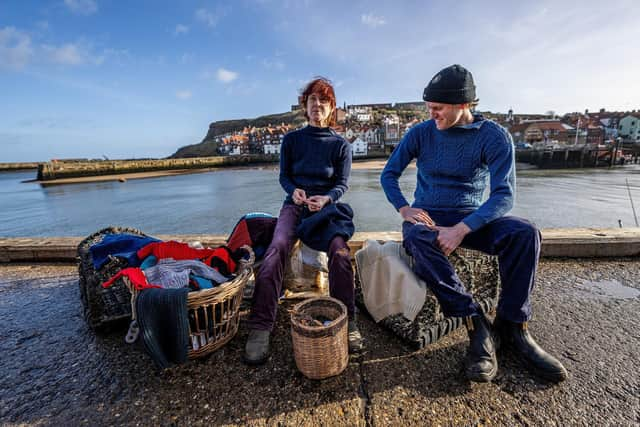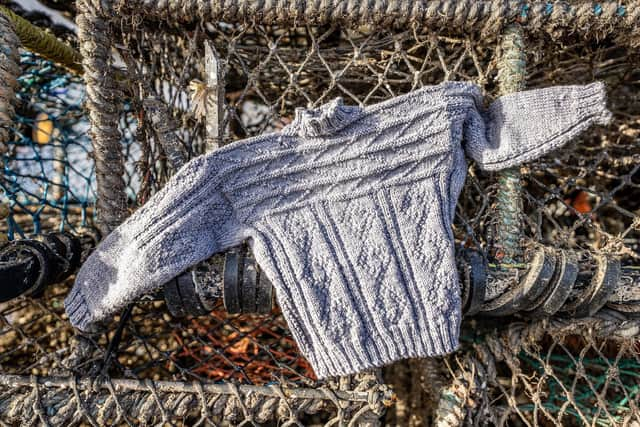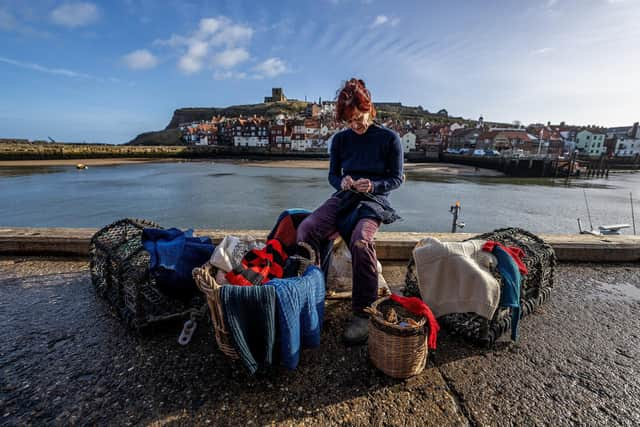Meet one of Yorkshire's last knitters of traditional woollen fishermen's jumpers
Originally worn by fishermen, ganseys were made mainly by women, never washed and it was said the grubbier they got the warmer they felt.
Many a yarn has been woven around the history of ganseys which stretches back a couple of hundred years.
Advertisement
Hide AdAdvertisement
Hide AdThe widespread belief that they were uniquely associated with a port is no more than a convenient myth, as is the idea that every fishermen who was washed up dead in one could be identified by the gansey they were wearing.


Deb Gillanders knits ganseys in Whitby for commissions. She was inspired by one of the few men who knits ganseys, Alf Hildred, when she met him at a party in Robin Hood’s Bay and was struck by the garment’s elaborate patterns. Mr Hildred fished out of Whitby in the 1960s and learned to knit them when some of the older lasses were still knitting.
Ms Gillanders recalled: “I’ve never seen anything like it, it was just fantastic, proper old and proper interesting. It was the shoulder strap that got me hooked, it looked like it had been knitted by the fairies, I thought ‘how the hell did he do that?
People knitted ganseys for their husbands, themselves and their families, she says, and no money was involved.
Advertisement
Hide AdAdvertisement
Hide AdTightly spun five-ply worsted wool can be extremely tough, standing up to all kinds of weather and rough treatment, and ganseys can be reknitted and mended, extending their lives.


There are two theories as to their origins.
One was that they were a mainstay of Guernsey’s knitting industry which can be dated back to the late 15th century and the other that they evolved from a finely knitted undergarment once worn under a jacket.
She said: “They evolved from very old woven garments where you didn’t want to waste a scrap of fabric. Knitting ganseys is really handy if you can’t afford to buy sufficient fabric. One massive influence was hundreds and hundreds of herring lasses who came down mainly from Scotland all the way down the coast and they disseminated patterns in Whitby.
“They were billetted with the families and everybody got together after tea and sat and knitted.


Advertisement
Hide AdAdvertisement
Hide Ad“Whitby is the only English port that has included the Scottish flag, which is a nice gansey motif into one of its recognised Whitby patterns.”
But from around the 1950s they faded from favour in the face of PVC and Goretex.
Ms Gillanders, whose business is called Propagansey, says you can get one that is machine-knitted “but it leaves you wanting more, it’s not just the same.
“If it’s sufficiently tightly spun wool, knitted on small needles, it will turn weather, turn spray, rather than wick it. I have one particular gansey and if I’ve forgotten my jacket and there’s half a mile walk home in the rain, I’m not bothered it will be fine.”
She organises an annual display of ganseys old and new from September 10 to September 18 at Fylingthorpe Methodist Church.